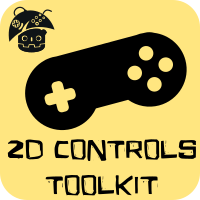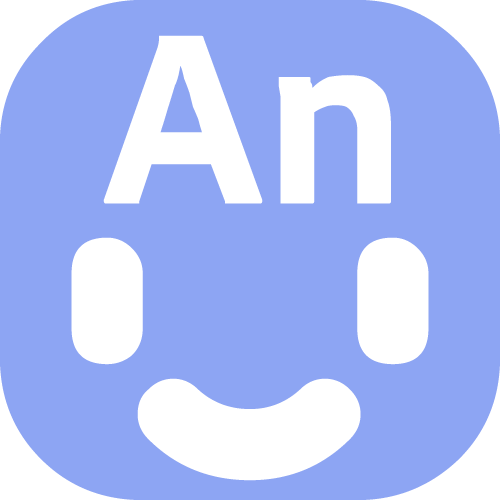Dynamic camera plugin for 2d top down games developed with Godot engine.
 3.5v1.0.02D ToolsBy: emirthab
3.5v1.0.02D ToolsBy: emirthab 3.5
3.5 3.2v1.0.02D Tools
3.2v1.0.02D ToolsAdds a simple context menu for Node2D in the 2D scene editor. The menu has buttons to: -Move node to the mouse position -Move node to the mouse position with grid snapping -Flip horizontally -Flip vertically
By: FabianLC- 4.1v1.0.02D Tools
This is a control that allows the sliding portion (i.e. thumb) to traverse a path defined by a Path2D node. This is unlike the native HSlider or VSlider control which only go horizontally or vertically.
By: markeel  4.3v1.0.02D Tools
4.3v1.0.02D ToolsAdds a new node type for creating 2D arrows with a curve to their body and optional outlining/transparency.
By: jlapier 4.0v1.02D Tools
4.0v1.02D Tools# csv-animations-builder This is a plugin for Godot that reads properties from a CSV file, creates animations based on the data, and integrates them into the `AnimationPlayer`. ## How to Use ### Preparations - Ensure your scene includes a `Sprite2D` and an `AnimationPlayer`, with the `Sprite2D` set as the root node. - Prepare a CSV file following the format provided in the example [here](addons/csv-animations-builder/example/Atlas_Animations_Data.csv). See [CSV File](#csv-file) for more details. - Have an image containing all the frames for your animations, either as an Atlas or a Sprite Sheet. This image will serve as the texture for your `Sprite2D`. ## Importing the CSV - In the editor, select the CSV file and navigate to the 'Import' tab. - Choose 'CSV Data' as the import type. - Click the 'Import' button below. ## Adding the Node to Your Scene - Add the `AnimationsImporter` node as a child of your `AnimationPlayer`. - Assign your CSV file to the `Csv Resource` property. - A list will appear showing the animations that will be configured in the `AnimationPlayer`. - Click on 'Import Animations'. - The existing animations in the `AnimationPlayer` will be removed and replaced with the new ones from the CSV. ## Intention - The purpose of this plugin is to allow your artist, animator, or you (Hi, solo developer), to manage the CSV with all updates or changes to the animations. Whenever the CSV is updated, simply re-import the CSV and re-import the animations through the node. You won't have to add animations by hand anymore! ## CSV File - The CSV file should contain the following columns: - animation_name: The name of the animation. - frame_coords_start_x / frame_coords_start_y: Coordinates in pixels of the lower-left corner of the region encapsulating this animation on your atlas. - frame_size_x / frame_size_y: The size of this animation region in pixels. - frame_duration_ms: The duration each frame appears on the screen in milliseconds. This is the inverse of frames per second. - frame_count: The number of frames in your animation. - autoplay_on_load: Specifies whether this animation should play upon game start. Set this to true for only one animation. - loop: Indicates whether this animation should repeat (loop) upon completion.
By: [email protected] 4.0v1.02D Tools
4.0v1.02D ToolsThis is a group of simple 2d animations similar with cocos2dx actions .You can build animations only in a few lines of code . Including action sequence,merge and ease.
By: fangshiao 3.4v1.32D Tools
3.4v1.32D ToolsCanvas for drawing in Godot Engine with mouse, trackpad, touch and pen. Also includes optional demo (scratch_drawer) of how to use it. * The Canvas is an extension of TextureButton and uses Line2D for drawing. * The drawing line can be edited and some examples are given. * The canvas can capture the screen and use that as the texture of the Canvas. Then the lines are hidden, to decrease drawing cost.
By: boukew99 4.3v1.12D Tools
4.3v1.12D Tools# 2D Controls Toolkit 2D Controls plugin For Godot 4.3: Includes: * Side-Scrolling Controller * Top-Down Controller Plug-and-Play* just add as a child of the Character2D node, and it will work. * Requires the following actions on input map: "up", "down", "left", "right", optionally: "sprint", "jump" those values can be changed on the node inspector. Other configurations: * Movement (For all control types): * Walk Speed * Sprint Speed * Acceleration * Deacceleration * Movement Type = "Move and Slide" or "Move and Collide" or "None" (Movement must be handled on player code) * Jump (For Side Scrolling): * Jump Height * Jump time to peak = Time to reach the top of the jump * Jump time to descend = Time fall * Variable Jump = If the jump can be interrupted by releasing the jump action key * Air control on jump = If player can be controlled in middle-air * Coyote Time = time that player can jump after leaving a platform * Jump Buffer Time = time that player can activate jump before hit the ground * Side-Scrolling * Handle Camera * Camera Smooth Distance * Camera Smooth Speed * Camera Look at Player * Camera Lock Y Rotation * Camera Max Boundary * Camera Min Boundary * Camera Zoom * Horizontal Offset * Vertical Offset * Custom Camera (Optional) * Top-Down * Action Type = Use actions to move or move to mouse click * Floor Group = Required to find floor StaticBody3D to handle mouse click on click mode. * Turn Speed * Handle Camera * Camera Smooth Distance * Camera Smooth Speed * Camera Zoom * Horizontal Offset * Vertical Offset * Custom Camera (Optional) Check out CiaNCI Chanel on YouTube for more: https://www.youtube.com/@CiaNCIStudio
By: Cianci 4.0v1.02D Tools
4.0v1.02D ToolsSmart polygon for Godot Engine. Features: - Cut - Knife - Merge
By: paralax034 4.0v1.0.22D Tools
4.0v1.0.22D ToolsA simple node that selects a random child and plays the audio
By: derwenzel 3.3v1.02D Tools
3.3v1.02D ToolsDisplays a (filled) hexagon 2D graphic, as used for example in RPGs for showing the distribution of attributes or alignments. This is the result of a community question from the German Discord Channel.
By: kuhnchris 4.1v1.0.02D Tools
4.1v1.0.02D ToolsAdds support for using Adobe Animate Texture Atlases to Godot. Read the README.md for more info on what is currently supported.
By: KAUTARUMA 4.0v1.02D Tools
4.0v1.02D ToolsQuickly generate ready-to-use AnimationPlayer directly from your sprite sheets within the Godot editor. Features - Supports Common Formats – Load PNG, JPG, WEBP, and more! - Auto-Detect – Let AnimSheet find animations automatically! Works with transparent backgrounds and strips. - Manual Drag & Drop – Draw animation frames directly on the sprite sheet preview! - Custom FPS Settings – Control playback speed per animation. - One-Click Node Generation – Instantly create Sprite2D and AnimationPlayer nodes with correctly set animation tracks. More info on github : https://github.com/Lighar/AnimSheet
By: Lighar 4.4v1.02D Tools
4.4v1.02D ToolsConfigures project settings for pixel art games when enabled.
By: mrkdji 4.3v1.0.02D Tools
4.3v1.0.02D ToolsAddon offers easy to use fader. The most typical usage is for transitions: func _transition(): await $Fader.fade_to_black() # hide/unload old stuff # show/load new stuff $Fader.fade_to_clear() Noteworthy features: - blocks mouse input on fade out (but allows on fade in) - fading can be awaited - allows fading out to any color in addition to standard fade_to_black and fade_to_white - allows fade speed customization
By: MadCatVR 4.0v1.0.02D Tools
4.0v1.0.02D ToolsAn editor plugin for Godot v4.X that allows custom snapping polygon vertices while editing tileset.
By: nklbdev 4.0v1.0.02D Tools
4.0v1.0.02D ToolsExpandable Character controller for 2D platformers based off the work of Noasey: https://godotengine.org/asset-library/asset/3312 In addition to the amazing parametrization on the base project by Noasey now movement modes are modular. So unneeeded code does not live in the character script and so expansion is easier since the code doesn't have to be touched. There's an included demo that uses all the previously included movement types now made into modules. The debug menu used in the demo can be expanded easily for extra modules, just use the included SpecialMovementSample.gd file to add new movement modes.
By: NahtreX 3.5v1.12D Tools
3.5v1.12D ToolsA simple plugin for easy of use that adds two node types SpriteOccluder and AnimatedSpriteOccluder both calculate a LightOccluder2D on runtime
By: ChromiumOS-Guy 3.2v1.0.22D Tools
3.2v1.0.22D ToolsA customizable button to request donations by ko-fi.
By: DeybisMelendez 3.4v1.02D Tools
3.4v1.02D Toolseasy to use add-on for creating tutorials and introduction section inside Godot scenes. Create an IntroController, and set its name/theme (for label and buttons). Then add IntroTip nodes to it as children. set highlighted area for your tip using Godot's native polygon tool, give it a tip text, and then start the intro by calling start() on Introcontroller.
By: farhadierf 4.3v1.02D Tools
4.3v1.02D ToolsMaximize your control over audio in your Godot projects with AudioStreamPlayerClipper2D, a solution for audio clipping that goes beyond the engine's native capabilities. Precisely set the start and end points of your audio clips quickly and intuitively through the editor. Full support for all platforms, including web (the audio loop with offset in Godot currently does not work for web). AudioStreamPlayerClipper2D ensures that your audio cuts and adjustments are maintained accurately across all platforms. Additionally, streamline your workflow with the ability to test audio directly in the editor inspector, without needing to run the game. Simplify the process of fine-tuning and refining your sounds quickly and efficiently. Settings Start Time End Time Apply Cut Audio Stream AutoPlay Loop Volume DB Pitch Scale Max Distance Attenuation Panning Strength Editor Play Test $AudioStreamPlayerClipper2D.loop = false $AudioStreamPlayerClipper2D.auto_play = false $AudioStreamPlayerClipper2D.start_time = 0.0 $AudioStreamPlayerClipper2D.end_time = 0.0 $AudioStreamPlayerClipper2D.apply_cut = false $AudioStreamPlayerClipper2D.volume_db = 0.0 $AudioStreamPlayerClipper2D.pitch_scale = 1 $AudioStreamPlayerClipper2D.max_distance = 2000.0 $AudioStreamPlayerClipper2D.attenuation = 1.0 $AudioStreamPlayerClipper2D.panning_strength = 1.0 $AudioStreamPlayerClipper2D.play() $AudioStreamPlayerClipper2D.stop()
By: Saulo de Souza 4.3v1.0.02D Tools
4.3v1.0.02D ToolsAn EffectBus node manages object pools of AnimatedSprite2D-based effects for performance optimization. The best use case of an EffectBus node is to pool hundreds (or even thousands) of AnimatedSprite2D flipbook effects in a scene where the effects can to be y-sorted, unlike using a regular particle system.
By: chasecarlson1 3.2
3.2